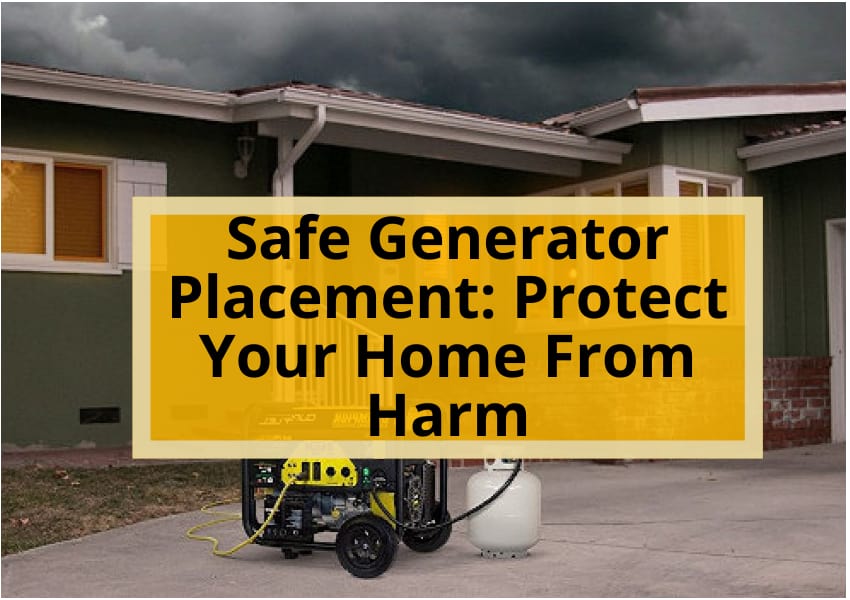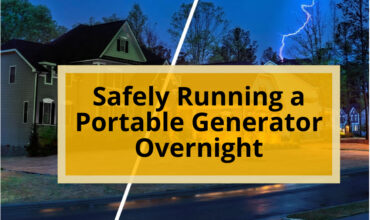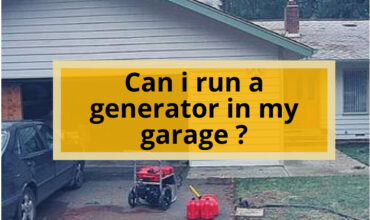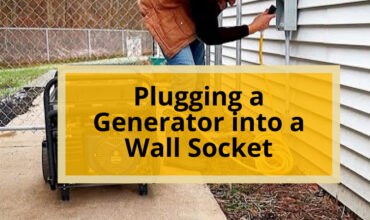In a world where power outages are a common occurrence, having a generator can be a lifesaver. But did you know that improper generator placement can actually put your life at risk? Yes, that’s right, your beloved backup power source can turn into a silent killer if not positioned correctly.
It’s like having a guardian angel that suddenly turns into a devil when you least expect it. So, how can you ensure that your generator remains a faithful protector and not a sinister threat? The answer lies in safe generator placement.
By following a few simple guidelines, you can protect your home from harm and keep your loved ones safe. In this article, we will explore the importance of proper generator placement, the factors to consider, the installation process, and expert advice to ensure your generator is positioned in a way that guarantees safety and peace of mind.
So, let’s dive in and discover the secrets to keeping your home powered without compromising your well-being.
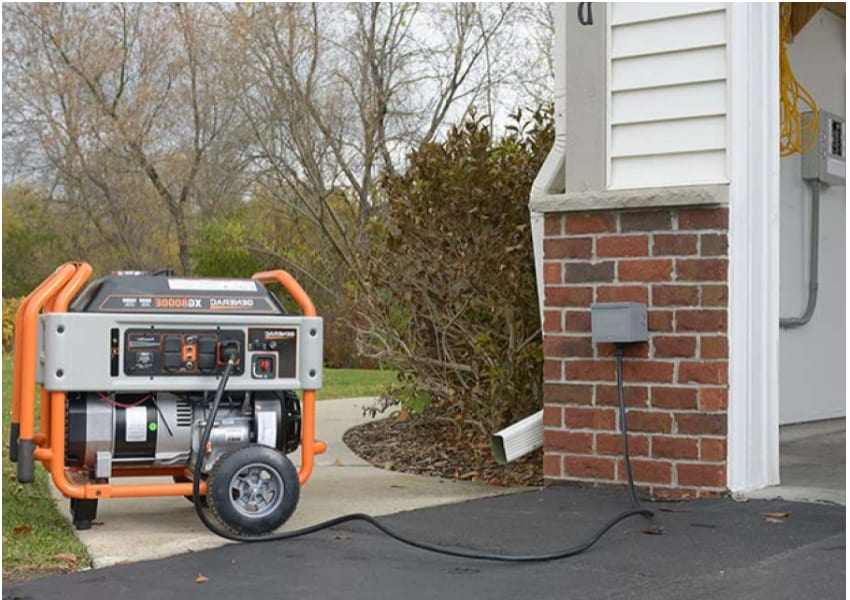
Where to place it?
When considering generator placement in a house, it is important to prioritize safety by adhering to guidelines that recommend placing generators outside in well-ventilated areas, away from living spaces, basements, and garages to prevent carbon monoxide poisoning.
Generators should never be placed inside a house as this can lead to fatal consequences. The distance between the generator and any building should be a minimum of 5-20 feet, depending on the type of generator. Factors such as the type of generator, available space, proximity to neighbors, fuel supply connection, and local building codes should be considered.
Safety precautions should include keeping the generator away from doors and windows, ensuring the exhaust faces away from properties, and storing fuel in a secure, well-ventilated location. Additionally, noise levels should be minimized through the use of housing or an exhaust muffler.
By following these guidelines, homeowners can ensure the safe placement of generators and protect their homes from harm.
Safety considerations
One important aspect to consider is the potential risks involved in the placement of a generator. Safety should be the top priority when deciding where to place a generator in a house.
Placing a generator inside the house is extremely dangerous and can lead to carbon monoxide poisoning, which is the highest generator-related injury and can even be fatal. Therefore, generators should always be placed outside the house in a well-ventilated area, following the manufacturer’s recommendations.
It is crucial to keep the generator away from doors and windows, and ensure that the exhaust faces away from properties. Additionally, the distance between the generator and any building should be a minimum of 5-20 feet, depending on the type of generator.
Following these safety measures will help protect the home and its occupants from potential harm.
Factors to consider
An important consideration in determining the appropriate location for a generator in a house is the type of generator being installed. Different types of generators have specific requirements and safety recommendations that should be followed. Factors to consider include the available space, proximity to neighbors, fuel supply connection, and local building codes.
When deciding on the placement of a generator, it is crucial to ensure that it is placed outside the house in a well-ventilated area, following the manufacturer’s guidelines. The generator should be positioned at a minimum distance of 5-20 feet from any building, depending on the type of generator. Additionally, it should be kept away from doors and windows, with the exhaust facing away from properties.
Considering the noise level is also important, as generators can be quite noisy. Measures such as using housing or an exhaust muffler can help minimize the noise. By taking these factors into account, one can ensure a safe and efficient placement of the generator, protecting both the home and its occupants.
also read : The Fuel Guide: Choosing The Right Gas For Your Generator
Installation process
The installation process of a generator involves careful consideration of the specific requirements and safety recommendations, ensuring a seamless integration of emergency power solutions into a well-designed electrical system.
Depending on the type of generator, the installation process varies. Portable generators, for instance, are movable and require careful placement each time they are used. Standby generators, on the other hand, require a flat concrete pad for installation and should be connected to the natural gas supply with a transfer switch.
It is important to follow the manufacturer’s guidelines and consult local building codes during the installation process to ensure compliance with safety regulations.
Additionally, providing shelter, such as a roof, can protect the generator from the elements, but it should still be well-ventilated to prevent overheating.
By adhering to proper installation procedures, homeowners can ensure the safe and efficient operation of their generators during power outages.
Expert advice
Expert advice is crucial when determining the appropriate location for a generator in a residential setting. Seeking the guidance of professionals can ensure the safety and effectiveness of the installation. Here are some key recommendations from experts:
- Consult with a licensed electrician or generator specialist to assess the specific needs and requirements of your home.
- Consider the layout and design of your property, including available space and proximity to neighbors, to determine the best placement for the generator.
- Follow the manufacturer’s guidelines and local building codes to ensure compliance with safety regulations.
- Install carbon monoxide alarms in the property to detect any potential leaks and protect against this silent and deadly gas.
By following these expert recommendations, homeowners can make informed decisions and protect their homes and loved ones from potential harm.
Frequently Asked Questions
How far away should the generator be placed from other structures on the property?
The generator should be placed at a minimum distance of 5-20 feet from other structures on the property, depending on the type of generator. This is crucial for safety reasons and to prevent any potential hazards or damage to nearby buildings.
Can a generator be placed on a wooden deck or patio?
Placing a generator on a wooden deck or patio is not recommended due to safety concerns. Generators should be placed on a stable, non-combustible surface, away from flammable materials, to prevent fire hazards and ensure proper ventilation.
Are there any specific requirements for placing a generator near a swimming pool or water source?
When placing a generator near a swimming pool or water source, specific requirements must be followed to ensure safety. These may include maintaining a minimum distance, using proper grounding techniques, and protecting the generator from water exposure to prevent electrical hazards.
Is it necessary to secure the generator to the ground or a concrete pad?
It is necessary to secure a generator to the ground or a concrete pad to ensure stability and prevent movement during operation. This helps maintain safe operating conditions and reduces the risk of accidents or damage.
Can a generator be placed in an enclosed shed or storage unit?
Placing a generator in an enclosed shed or storage unit is not recommended. Generators should be placed outside in a well-ventilated area to prevent carbon monoxide poisoning. Safety guidelines advise against enclosing generators to ensure proper ventilation and prevent potential hazards.
